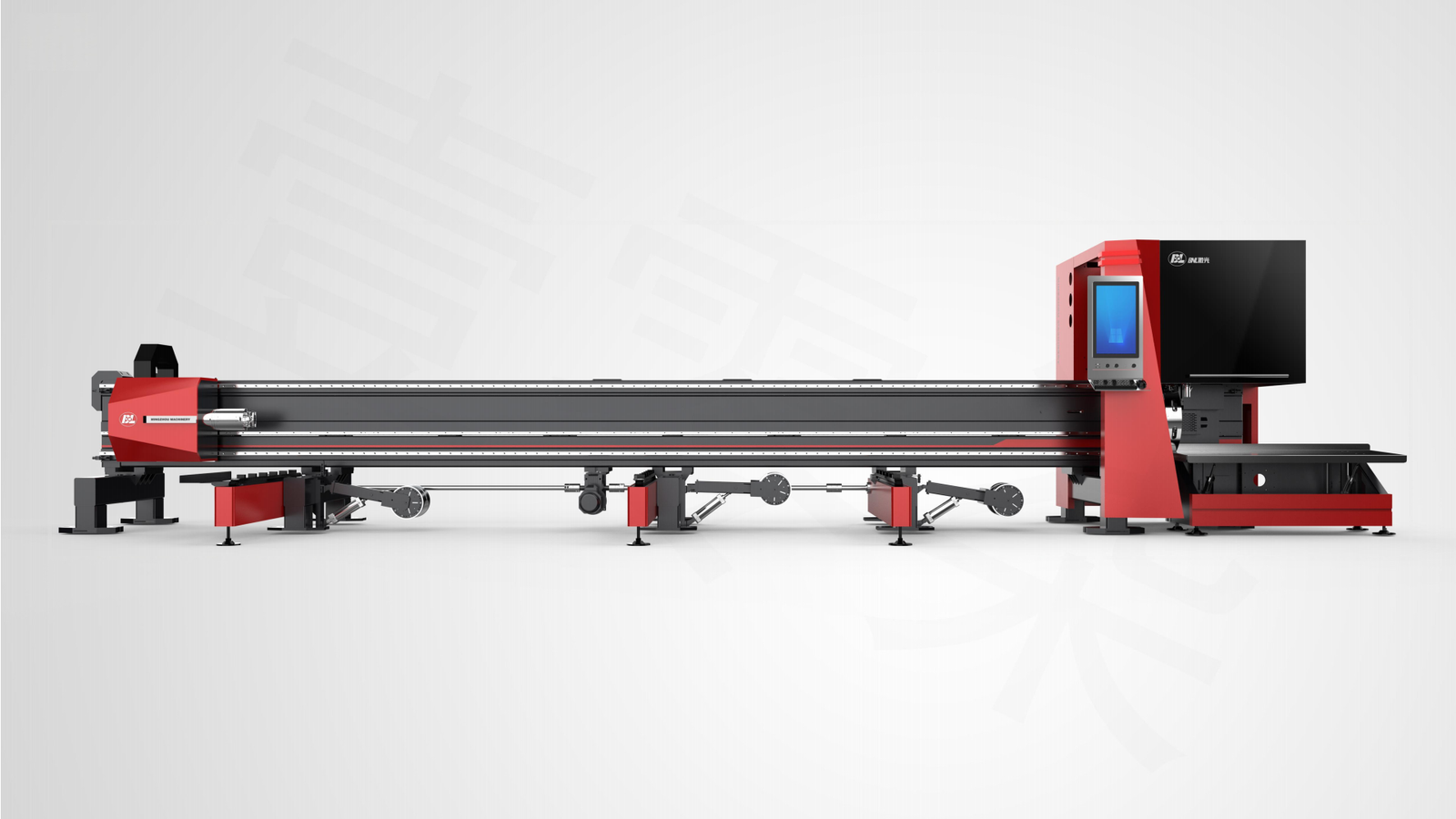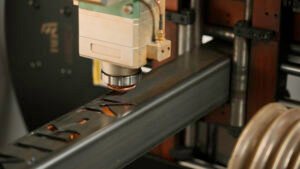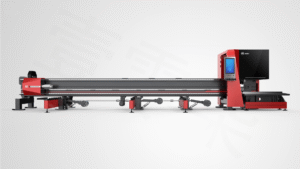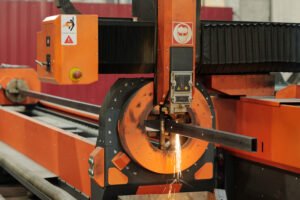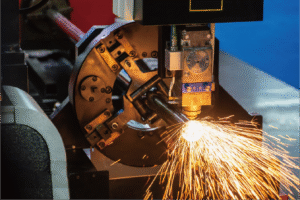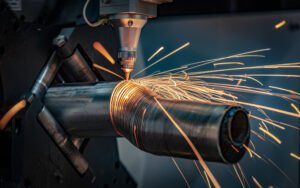The Smart Software Behind Modern Metal Tube Cutting Machines
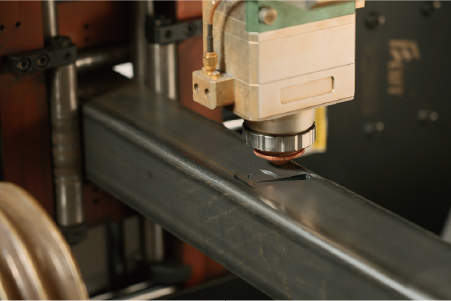
Are you struggling with complex CAD drawings and inefficient production flows in your metal fabrication business? Many operations face these exact frustrations, leading to costly delays and wasted materials. The solution lies in embracing the smart software revolution1 transforming modern tube cutting.
Smart software for metal tube cutting machines revolutionizes operations by automating design, optimizing cutting paths, and reducing material waste. This intelligent automation dramatically enhances production efficiency, lowers operational costs, and minimizes the need for highly specialized operators in metal fabrication facilities.
Having personally witnessed the evolution of metal fabrication, I understand the constant pressure to innovate and optimize. The days of solely relying on manual expertise are rapidly being replaced by the precision and efficiency of digital solutions. Let's explore how the right software can be a game-changer for businesses like yours, making complex tasks simpler and more profitable.
For years, the metal tube cutting industry has grappled with a fundamental dilemma: how to balance intricate designs with efficient production. Traditional methods often involved painstaking manual programming or rigid CAD/CAM systems that demanded highly specialized operators. This created bottlenecks, increased labor costs, and often led to significant material waste. However, the paradigm is shifting. Modern smart software isn't just about controlling a machine; it’s about creating an intelligent ecosystem that understands design intent2, optimizes material flow, and even anticipates maintenance needs. At MZBNL, we've seen firsthand how integrating advanced algorithms and user-friendly interfaces can transform a client's entire workflow, reducing setup times from days to mere hours and minimizing waste to near zero. This transformative power moves beyond simple automation, pushing the boundaries of what's possible in precision manufacturing and offering a critical advantage in today's competitive global market.
Background on the evolution of software in metal tube cutting machines
For too long, the metal tube cutting industry has battled with software that felt more like a barrier than a boost. Clunky interfaces and rigid programming often led to frustrating delays and costly errors. But the landscape is rapidly changing, with cutting-edge software now simplifying even the most intricate tasks.
Software in metal tube cutting has evolved from basic manual input systems to sophisticated CAD/CAM solutions, and now to smart, integrated platforms. These advancements have progressively automated design, optimized production processes, and significantly reduced reliance on extensive manual programming, leading to greater precision and efficiency.
My journey in the metal fabrication industry, spanning over 25 years with MZBNL, has provided a front-row seat to the remarkable transformation of software in tube cutting. I recall the early days when every cut felt like a manual endeavor, fraught with the risk of human error and demanding immense skill. The leap from those rudimentary processes to the integrated, intelligent systems we see today is nothing short of revolutionary, fundamentally reshaping how businesses like Ahmed Al-Farsi's operate. This evolution has not only enhanced precision and speed but also democratized access to advanced manufacturing capabilities, making complex designs achievable for a wider range of businesses. Understanding this progression helps us appreciate the true value of today's smart solutions.
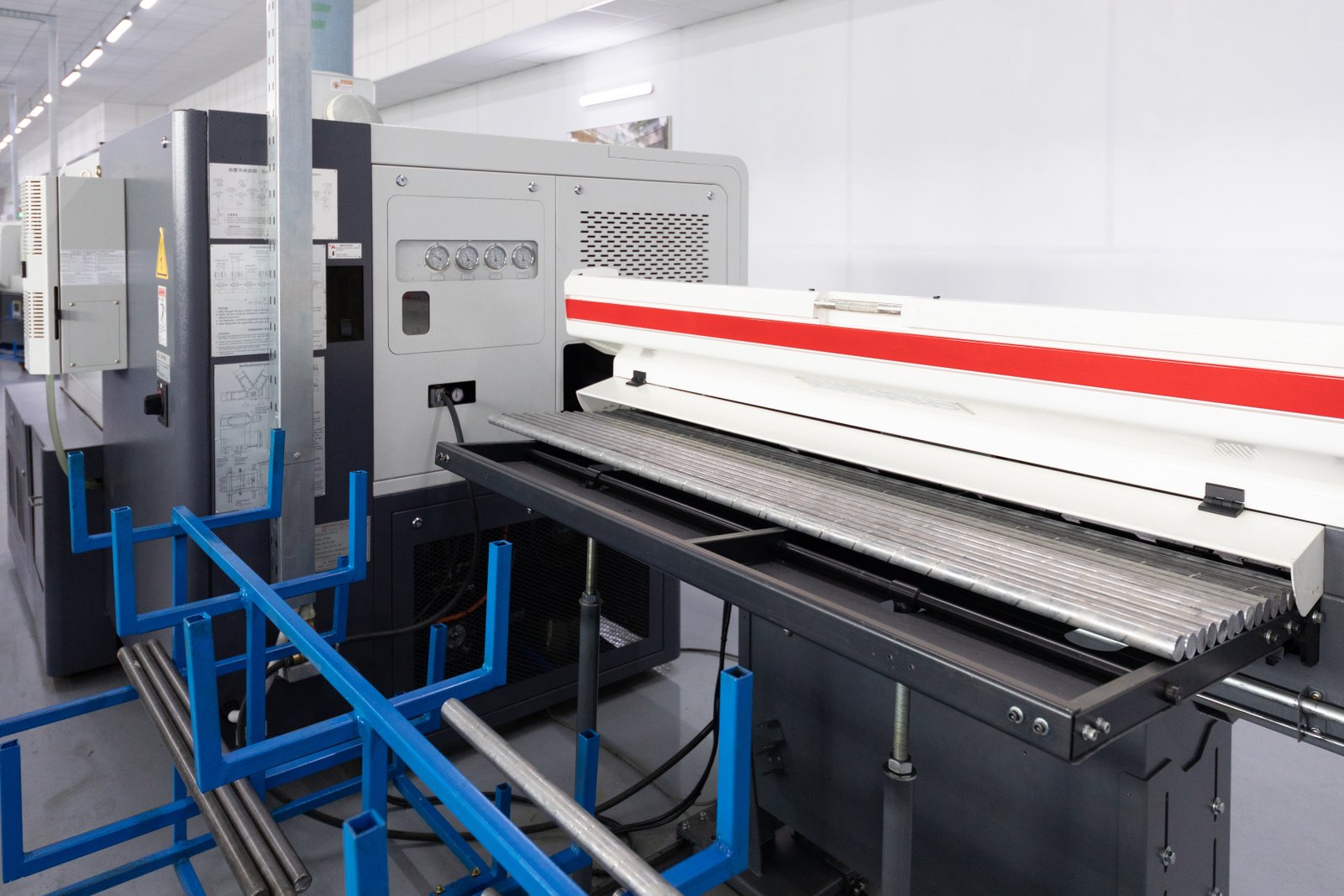
The journey of software in metal tube cutting is a testament to the industry's relentless pursuit of efficiency and precision. It began with very basic tools and has culminated in highly complex, yet user-friendly, intelligent systems.
From Manual Drafting to Basic CAD/CAM
In the nascent stages of metal tube cutting, designs were primarily conceptualized through manual drafting. Engineers would painstakingly create blueprints, which then had to be interpreted and manually programmed into early machine controls. This process was inherently time-consuming, prone to human error, and required a significant amount of specialized skill. It meant that even a minor design modification could trigger a cascade of manual re-calculations and re-programming, significantly impacting project timelines and increasing labor costs.
The introduction of Computer-Aided Design (CAD) and Computer-Aided Manufacturing (CAM) marked a pivotal shift. Initially, CAD systems allowed for the creation of 2D digital drawings, later evolving to 3D models. These digital representations streamlined the design process, making it easier to visualize complex geometries. However, the integration with cutting machines was often cumbersome. Files had to be converted between different software platforms, and the CAM component still required a skilled operator to translate the design into machine-specific G-code. I remember speaking with clients, much like Ahmed, who expressed frustration over the need for dedicated, highly skilled CAD operators, highlighting a significant pain point for businesses facing staffing challenges.
While CAD/CAM dramatically improved design accuracy and reduced the physical labor of drafting, it didn't fully resolve the efficiency paradox. The workflow often remained siloed, with designers, programmers, and machine operators working with disconnected tools. This meant that while individual tasks might have been faster, the overall production cycle still contained numerous hand-off points and potential for errors, requiring a dedicated team to manage the entire process, impacting overall throughput.
Emergence of Integrated Control Systems
The next significant phase involved the integration of CAD with CAM and direct machine control, leading to more unified systems. Instead of separate design and programming steps, some software began to offer more seamless transitions from drawing to cutting path generation. This reduced the need for manual data transfer and minimized compatibility issues between different software packages. For instance, early integrated systems could reduce programming errors by an estimated 15-20% compared to completely disjointed workflows, as they provided a more cohesive environment for design and operation.
These integrated systems also started incorporating basic nesting functionalities, allowing operators to arrange multiple parts on a single tube to maximize material utilization. While rudimentary by today's standards, this was a crucial step towards waste reduction. It began to shift the focus from simply cutting parts to optimizing the entire cutting plan. For a mid-sized business like Ahmed’s, even small gains in material efficiency could translate into substantial cost savings over time.
However, even with these advancements, the systems were often proprietary and complex. Operators still required extensive training—often weeks or even months—to master the intricacies of the software and the machine. This presented a significant barrier to adoption for smaller businesses or those with high operator turnover, like many of our clients in Southeast Asia and the Middle East, who consistently emphasize ease of use and reduced training burdens.
The Leap Towards Automation and Connectivity
The most recent and impactful evolution has been the push towards full automation, connectivity, and intelligence. This era is characterized by the integration of IoT (Internet of Things) principles, allowing machines to communicate not just with their operators but with each other and with central management systems. This has enabled features like real-time monitoring, remote diagnostics, and predictive maintenance.
The concept of Industry 4.0 has heavily influenced this leap, pushing for smart factories where machines, products, and people are seamlessly connected. For metal tube cutting, this means software that can not only generate cutting paths but also optimize scheduling, manage material inventory, and even learn from past operations to improve future performance. This level of automation significantly reduces manual intervention, freeing operators to focus on higher-value tasks and improving overall plant productivity.
Furthermore, this stage has seen the rise of user-friendly interfaces that abstract away much of the underlying complexity. My colleagues at MZBNL often highlight how our innovations, such as the No-CAD Operating System, exemplify this trend. They've been designed to drastically lower the skill threshold for machine operation, making advanced tube cutting accessible to a wider pool of talent and directly addressing the industry’s persistent challenge of skilled labor shortages, offering a competitive edge for companies like MZBNL.
Smart software reduces material wasteDoğru
Modern tube cutting software optimizes cutting paths to maximize material utilization, significantly reducing waste compared to manual methods.
CAD eliminated all manual programmingYanlış
Early CAD/CAM systems still required skilled operators to translate designs into machine code, though they reduced manual drafting work.
Current advancements in smart software for tube cutting
Are traditional CAD programs slowing down your metal fabrication process and requiring specialized staff? Many businesses face this exact problem, limiting their production flexibility and increasing operational costs. However, the latest smart software is revolutionizing how we approach tube cutting.
Current smart software in tube cutting integrates AI-driven optimization, real-time data feedback, and intuitive interfaces, including No-CAD systems, to drastically simplify operations. These advancements boost productivity, minimize material waste, and reduce reliance on highly specialized CAD engineers, making sophisticated cutting accessible to more users.
The modern metal tube cutting industry is no longer just about brute force and precision mechanics; it's increasingly about the intelligence embedded within the machines. As someone who has spent over two decades observing and contributing to this sector, I’ve witnessed a profound shift towards software that isn't just functional, but genuinely smart. These advancements are directly tackling the pain points that businesses like Ahmed Al-Farsi's grapple with daily, from simplifying complex design tasks to optimizing material usage and streamlining entire workflows. Let's delve into how these cutting-edge software solutions are reshaping the landscape of metal fabrication, offering unprecedented levels of efficiency, cost-effectiveness, and ease of use, positioning MZBNL at the forefront of this transformation.
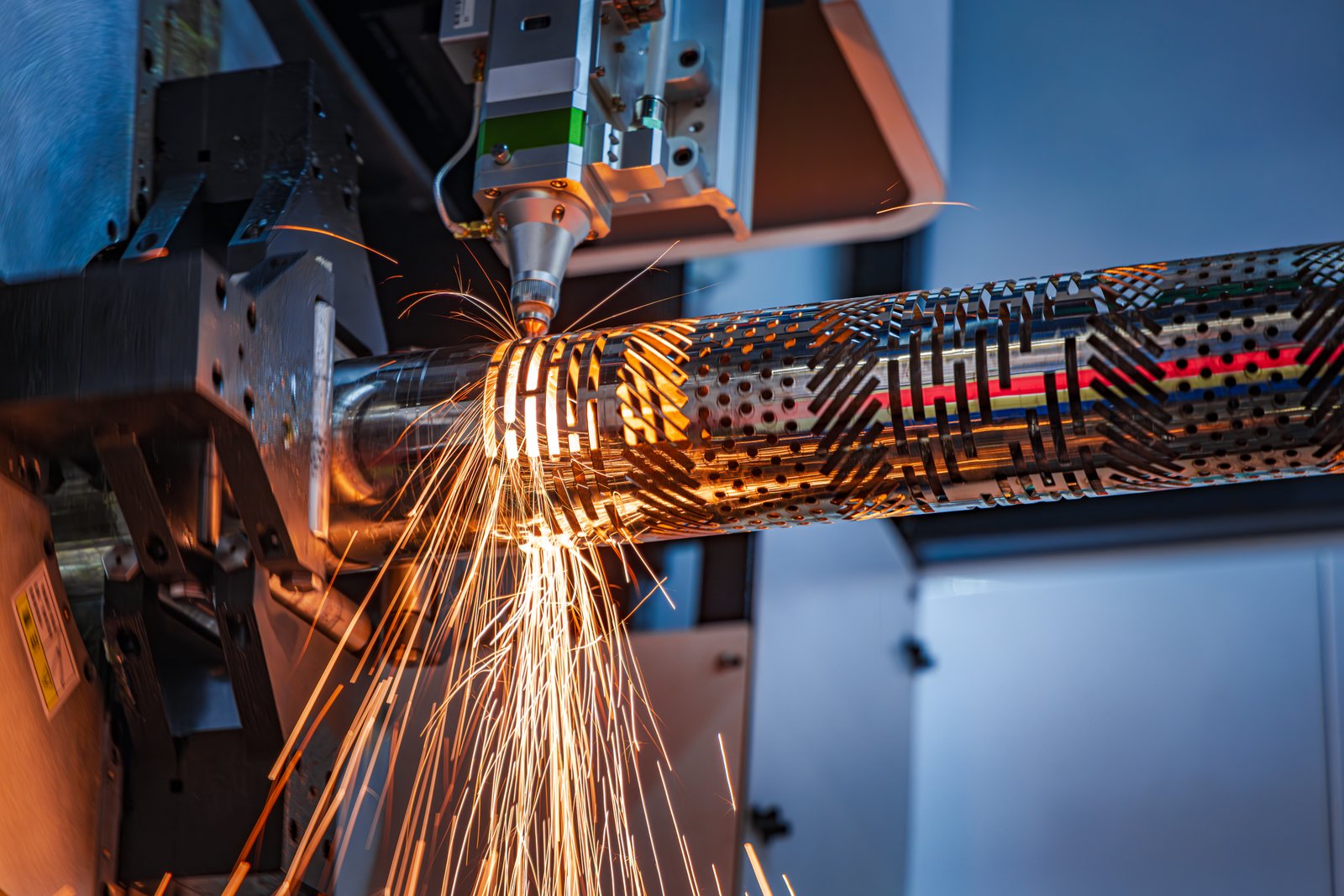
Today's smart software solutions for metal tube cutting machines are far removed from the basic programs of yesteryear. They integrate advanced algorithms, machine learning, and intuitive user interfaces to deliver unparalleled efficiency and flexibility. These innovations directly address some of the most pressing challenges faced by our clients globally, from Southeast Asia to North America.
AI-Driven Optimization and Predictive Analytics
One of the most significant leaps in smart software is the integration of Artificial Intelligence (AI) and Machine Learning (ML). These technologies are now being used to analyze vast datasets related to cutting parameters, material properties, and machine performance. This allows the software to autonomously optimize cutting paths, nesting layouts, and even suggest ideal power settings for different materials, far surpassing what a human operator could achieve manually. For example, AI-powered nesting algorithms can often reduce material waste by an additional 5-10% compared to traditional optimization methods, translating into substantial savings for high-volume operations.
Beyond optimizing current operations, AI also powers predictive analytics. By continuously monitoring machine performance, sensor data, and historical maintenance records, the software can anticipate potential equipment failures before they occur. This allows for proactive maintenance scheduling, minimizing costly downtime. For a factory operating multiple shifts, preventing just one unscheduled breakdown can save tens of thousands of dollars in lost production and repair costs annually. This capability directly supports a stable, long-term business like Ahmed's, which relies on consistent machine uptime for its contract-based fabrication services.
Furthermore, AI contributes to adaptive cutting. The software can dynamically adjust parameters in real-time based on immediate feedback from the cutting process, such as changes in material thickness or temperature, ensuring consistent cut quality and reducing errors. This self-correction capability improves precision and reduces the need for manual recalibration, enhancing the overall reliability of the production line.
Intuitive Interfaces and No-CAD Systems
Perhaps the most impactful advancement for daily operations is the shift towards highly intuitive user interfaces and, more specifically, No-CAD systems. Traditionally, operating a laser tube cutting machine required extensive knowledge of complex CAD software, demanding skilled engineers to design and modify parts. This created a significant bottleneck and increased the training burden, a pain point Ahmed Al-Farsi shared with me: "Previous machines required skilled CAD operators," and "High operator turnover caused retraining burdens."
MZBNL recognized this critical industry need and pioneered our No-CAD Operating System. This innovation allows operators to process standard tube types and hole patterns simply by entering parameters directly into the machine's interface, completely bypassing the need for complex 3D CAD drawings. This dramatically lowers the skill threshold for machine operation and shortens setup time. Instead of requiring 15 days of intensive training at the equipment factory, our system enables operators to be proficient with just 1 day of on-site training. This ease of use not only solves the issue of operator turnover but also empowers businesses to scale their operations without being constrained by the availability of specialized CAD engineers.
This user-friendly design ensures that even new operators can quickly become productive, minimizing the learning curve and maximizing output from day one. It's about empowering the workforce and making advanced technology accessible, enabling businesses to adapt more quickly to market demands and maintain continuous production flow, which is vital for meeting tight project deadlines.
Real-Time Monitoring and Digital Twin Capabilities
Modern smart software also excels in providing comprehensive real-time monitoring and advanced digital twin capabilities. Real-time monitoring allows managers and operators to track every aspect of the cutting process, from material consumption and cutting speed to machine status and error alerts, all from a centralized dashboard. This immediate feedback loop is crucial for identifying inefficiencies, preventing issues, and making on-the-fly adjustments to optimize production.
Digital twin technology takes this a step further by creating a virtual replica of the physical machine and its operations. This digital model can simulate cutting processes, test new designs, and even predict the impact of changes to production parameters without affecting the actual machine. For example, before a complex job begins, a digital twin can run simulations to identify potential collisions or material waste, allowing adjustments to be made in a virtual environment. This significantly reduces prototyping costs and accelerates time-to-market for new products.
Furthermore, these systems often include robust remote diagnostics capabilities. As Ahmed mentioned his interest in "remote diagnostics" and "spare parts availability and remote diagnostics," this feature becomes critical for international clients. My team at MZBNL can remotely access a machine's software, diagnose issues, and even push software updates or make configuration changes, minimizing the need for on-site visits and ensuring rapid support regardless of geographical distance. This level of connectivity ensures maximum uptime and operational continuity for our global clientele, reinforcing the value proposition of a reliable turnkey solution.
AI reduces material wasteDoğru
AI-powered nesting algorithms can reduce material waste by 5-10% compared to traditional methods.
No-CAD requires CAD skillsYanlış
No-CAD systems are designed to eliminate the need for CAD expertise, allowing operators to work with simple parameter inputs.
Identifying challenges faced by the metal tube cutting industry
The metal tube cutting industry is dynamic, yet it frequently encounters significant hurdles that impede efficiency and growth. From skilled labor shortages to wasteful production methods, these challenges demand strategic solutions. Recognizing these pain points is the crucial first step toward lasting innovation.
The metal tube cutting industry faces critical challenges including a shortage of skilled operators, high material waste due to inefficient cutting, complex setup processes, and difficulties integrating diverse machinery. These issues collectively hinder productivity, increase operational costs, and impact overall business profitability across global markets.
Even with the incredible advancements in smart software, the metal tube cutting industry is far from immune to significant operational challenges. Through my extensive experience working with hundreds of metal fabrication businesses3 across diverse markets—from the bustling factories in Southeast Asia to the high-tech enterprises in North America—I've identified several recurring pain points that continue to impact profitability and growth. These aren't minor inconveniences; they are fundamental obstacles that, if unaddressed, can severely limit a company's potential. Understanding these challenges is paramount, as it allows us to precisely tailor our technological solutions, ensuring they truly alleviate the burdens faced by our clients, much like Ahmed Al-Farsi in the UAE, who is actively seeking ways to upgrade and automate his production efficiently.
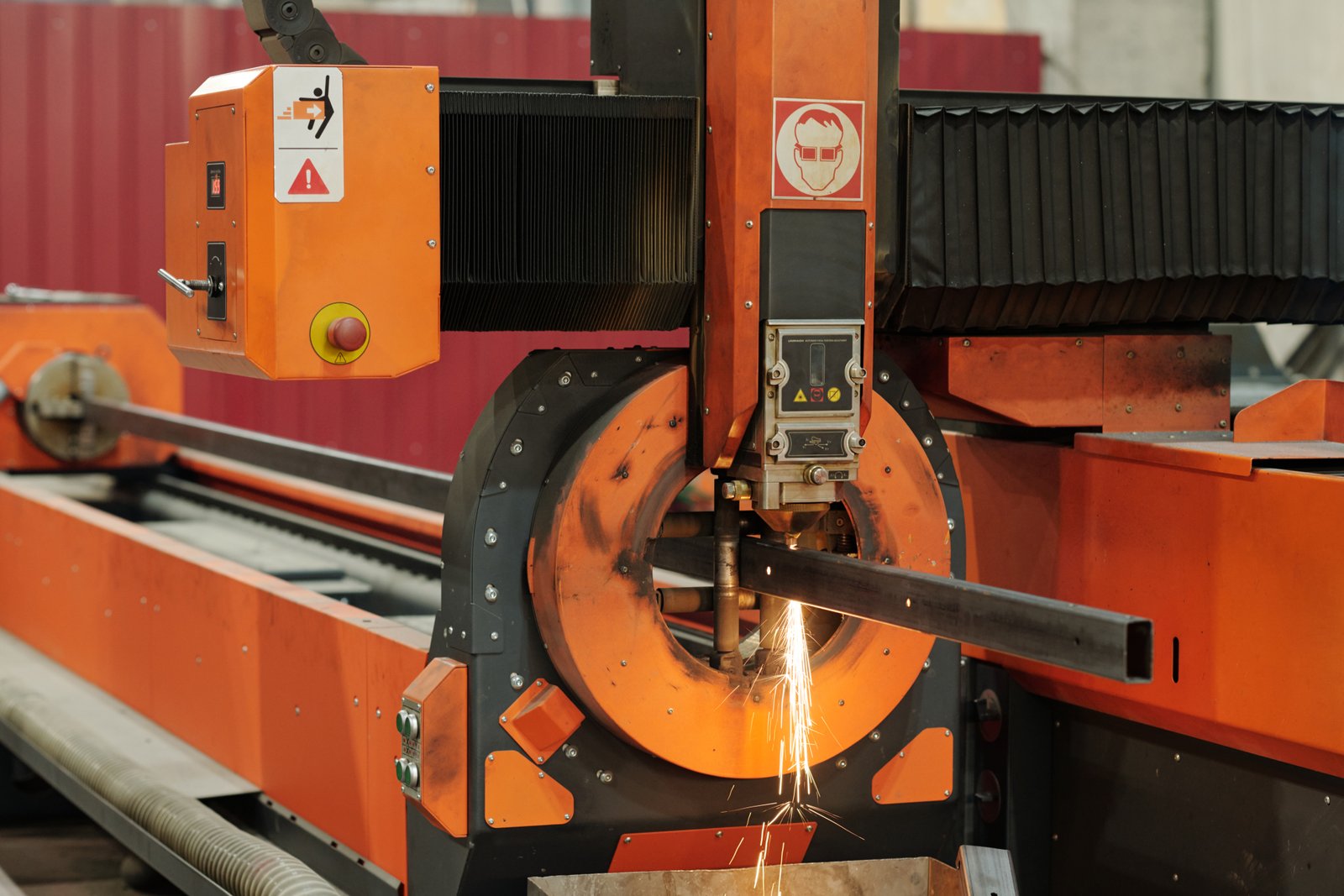
Despite the technological strides, the metal tube cutting industry is continually confronted by a set of persistent challenges that impact everything from labor costs to material utilization and overall competitiveness. Addressing these requires a holistic approach that leverages smart software as a core solution.
Skilled Labor Shortages and Training Burden
One of the most pervasive and critical challenges facing the global metal fabrication industry is the escalating shortage of skilled labor. As older, experienced operators retire, there is a distinct lack of new talent entering the field with the necessary expertise in machine operation, programming, and maintenance. This demographic shift creates a significant operational gap for businesses. According to a 2023 report by the Manufacturing Institute4, over 2.1 million manufacturing jobs could go unfilled by 2030 in the US alone, a considerable portion of which relates to skilled machine operation.
For a business owner like Ahmed Al-Farsi, this translates into tangible problems: "High operator turnover caused retraining burdens." Every time a skilled operator leaves, the company incurs substantial costs in recruitment, training, and a temporary dip in productivity as new staff learn the ropes. Traditional machines, with their reliance on complex CAD/CAM knowledge and intricate manual adjustments, exacerbate this problem, making the learning curve steep and the training period lengthy—often weeks or months. This constant cycle of training and turnover is a drain on resources and a major impediment to consistent, high-quality output.
Furthermore, the complexity of older software systems means that even when new operators are hired, it takes a long time for them to become fully proficient. This extended training period impacts immediate productivity and places additional strain on existing skilled staff who must dedicate time to mentoring. The industry urgently needs solutions that simplify operation and reduce the dependency on highly specialized, difficult-to-find personnel.
Material Waste and Inefficient Production
Another significant pain point is material waste, which directly impacts a company's bottom line and environmental footprint. Conventional laser cutting systems often start cutting from the tube head, and at the end of the process, they typically generate unusable "tail material." This leftover section, which cannot be incorporated into a final product, accumulates as scrap, representing lost profit and unnecessary material consumption. For a business processing tons of metal tubing annually, even a small percentage of waste can equate to enormous financial losses over time.
Beyond just tail material, inefficient nesting and cutting paths contribute to further waste. Without advanced optimization algorithms, parts might not be arranged on the tube in the most material-efficient way, leading to more off-cuts and reduced yields. This not only wastes expensive raw materials but also increases the frequency of material handling, adding to labor costs and slowing down production. I’ve seen countless examples where a better nesting strategy could have saved clients tens of thousands of dollars annually.
Consider the implications for high-volume manufacturers, such as those producing automotive or furniture components. Every millimeter of wasted material, when multiplied by thousands of parts, becomes a substantial cost burden. This inefficiency extends beyond just the material itself; it also consumes additional energy for cutting and processing the waste, and incurs costs for waste disposal, further eroding profit margins.
Integration Complexities and Data Silos
In today's increasingly digital manufacturing environment, the inability to seamlessly integrate different machines and software systems creates significant operational hurdles. Many metal fabrication shops operate with a mix of machinery from various vendors, each with its own proprietary software and data format. This often results in "data silos," where information from one machine or process cannot easily communicate with another. This lack of interoperability leads to inefficiencies, manual data entry, and potential errors.
For instance, a company might use one software for design, another for nesting, and a third for machine control. The manual transfer of data between these systems is time-consuming and opens the door to transcription errors. Moreover, the inability to get a holistic view of the production process—from order entry to final part delivery—hinders effective decision-making. Managers cannot easily track real-time performance metrics, identify bottlenecks, or implement predictive maintenance across their entire fleet. Ahmed Al-Farsi’s preference for "turnkey solutions that are easy to install and operate" directly reflects this desire for simplified integration.
This fragmented technological landscape also complicates scaling operations and implementing advanced Industry 4.0 initiatives. Without unified data flows, leveraging AI for predictive maintenance across multiple machines or optimizing an entire production line becomes incredibly challenging. The long machine lead times mentioned by Ahmed as a pain point can also be exacerbated by the complexities of integrating new equipment into an existing, disparate system, highlighting the urgent need for more cohesive and interconnected software solutions within the industry.
Skilled labor shortage impacts productivityDoğru
The article highlights how retiring operators and lack of new talent create operational gaps, requiring costly retraining.
Material waste only affects raw material costsYanlış
Waste impacts multiple areas including energy consumption, disposal costs, and labor efficiency - not just material expenses.
Innovative solutions to overcome existing software challenges
The pervasive challenges of skilled labor, material waste, and complex integration have long burdened the metal tube cutting industry. But what if there were smarter ways to operate? We're now seeing innovative software solutions emerging that directly address these core issues.
Innovative software solutions are transforming tube cutting by offering streamlined No-CAD operations that reduce skill requirements, integrating zero-waste tail material cutting logic, and enhancing automatic front-feeding mechanisms. These advancements significantly boost efficiency, lower operational costs, and simplify machine operation, addressing critical industry pain points directly.
Having meticulously identified the significant hurdles faced by the metal tube cutting industry5, the crucial next step is to explore how cutting-edge software innovations are actively providing robust solutions. My 25 years with MZBNL, a company built on integrating R&D, manufacturing, sales, and service, have shown me that true progress comes from targeted technological advancements. We’ve poured our expertise into developing systems that don't just add features but fundamentally solve problems—problems that businesses like Ahmed Al-Farsi’s encounter every day. Let's dive into how these groundbreaking software solutions, exemplified by MZBNL's patented innovations, are not merely incremental improvements but revolutionary steps forward, making operations smoother, more cost-effective, and empowering manufacturers to thrive in a competitive global landscape.
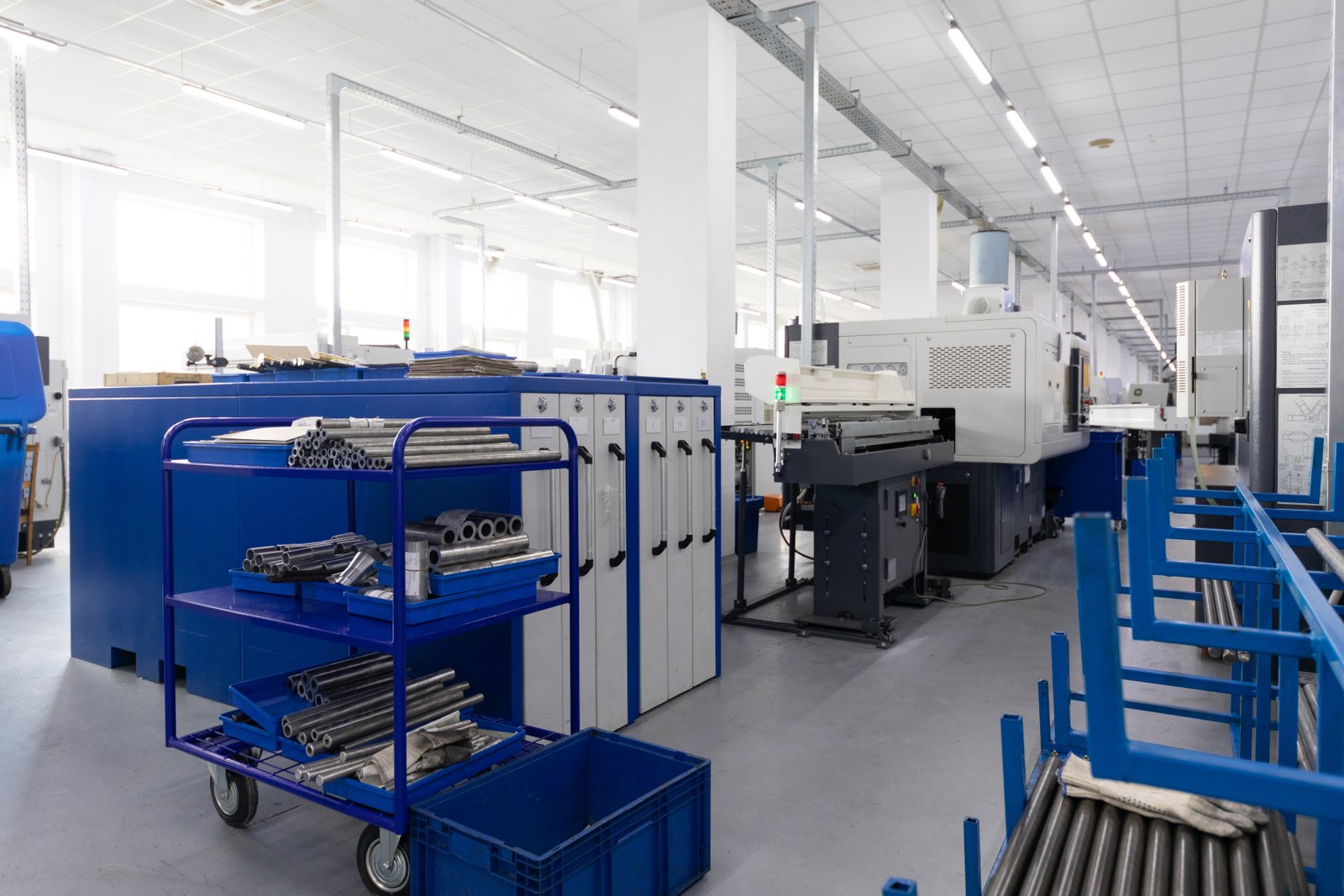
The response to the metal tube cutting industry's challenges comes in the form of intelligent software solutions that redefine efficiency, ease of use, and material utilization. At MZBNL, we've invested heavily in R&D to develop patented technologies6 that directly address these pain points, transforming the way our global clients operate.
Streamlining Operations with User-Centric Software (No-CAD)
One of the most significant breakthroughs in addressing the skilled labor shortage and training burden is the development of user-centric software, particularly No-CAD systems. Traditional laser cutting machines often require operators to return to the design office to create or modify complex 3D drawings before production can begin. This process is inherently inefficient, time-consuming, and demands a high level of CAD proficiency, contributing to the "high operator turnover caused retraining burdens" that Ahmed Al-Farsi cited as a major pain point.
MZBNL's pioneering No-CAD Operating System directly tackles this by allowing operators to process standard tube types and hole patterns simply by entering parameters. There's no need for complex drawing creation or modification, eliminating a major bottleneck in the workflow. For instance, a fabricator needing a simple rectangular cut or a series of holes can input the dimensions directly into the machine interface. This innovation dramatically improves ease of use, shortens setup time, and significantly lowers the skill threshold for machine operation. Instead of requiring 15 days of intensive training at the equipment factory, operators can now achieve proficiency with just 1 day of on-site training. This not only reduces training costs but also empowers businesses to maintain continuous production even with fluctuations in their workforce.
This paradigm shift in operation reduces the reliance on highly specialized CAD engineers, making the advanced capabilities of laser tube cutting accessible to a broader pool of talent. It democratizes the technology, allowing mid-sized metal fabrication businesses, like Ahmed's, to automate their workflows and expand their capacity without being limited by the availability or cost of highly specialized personnel. The impact on daily operational flexibility and efficiency is immense, as tasks that once took hours of programming can now be set up in minutes.
Maximizing Material Utilization and Productivity (Zero-Waste & Front-Feeding)
Material waste has always been a significant cost factor in metal fabrication, particularly with conventional laser cutting systems7 that often leave unusable tail material. MZBNL's innovative approach to cutting logic directly combats this. Traditional machines typically start cutting from the tube head, resulting in leftover tail material at the end of the process. Our patented Zero-Waste Tail Material Innovation redesigns the cutting logic to calculate from the rear chuck as the origin. This allows the system to eliminate leftover tail material entirely, as long as the remaining section is smaller than the product length. This simple yet profound change maximizes material utilization, boosting cutting efficiency and significantly reducing raw material costs. For a company processing large volumes of metal tubing, this translates into substantial savings over a year.
Complementing this, MZBNL also introduced the optimized Front-Feeding Innovation. While traditional machines rely on side or rear manual loading, which can be cumbersome and labor-intensive, our design automatically pulls the tube in from the front of the machine. This design increases feeding efficiency by approximately 40% and reduces operator labor intensity by roughly 40%. The benefits are twofold: faster material handling means higher throughput and increased productivity, while reduced physical strain on operators leads to a safer, more ergonomic workplace and less fatigue. This directly contributes to a more efficient and productive operation, crucial for businesses aiming to expand their capacity in demanding sectors like architectural metalwork or vehicle parts supply.
To illustrate the combined impact of these innovations, consider the following comparison:
| Özellik | Geleneksel Sistem | BNL Innovation | Etki |
|---|---|---|---|
| CAD Gereksinimi | Mandatory for complex parts | Optional (Parameter Entry for standard parts) | Reduces skill threshold, speeds setup, lowers training costs |
| Kuyruk Malzemesi | Unusable leftover (significant waste) | Zero waste (if remaining section is smaller than product) | Maximizes material utilization, significant cost savings |
| Feeding Method | Side/Rear Manual, high labor | Optimized Front-Feeding (Automatic) | Increases feeding efficiency by ~40%, reduces labor by ~40%, enhances safety |
These innovations are not just theoretical; they are proven in practice across our 4000+ global enterprise clients. By tackling waste and manual labor head-on, MZBNL's smart software provides a tangible competitive advantage, allowing businesses to operate more leanly and profitably.
Enhanced Connectivity and Remote Management
The challenge of integrating disparate systems and the need for reliable after-sales support, particularly for international clients, is critically addressed by enhanced connectivity features within smart software. Ahmed's concern about "equipment from some suppliers lacked local service support" and his prioritization of "remote diagnostics" perfectly highlights this industry need. Modern smart software enables machines to be connected to the internet, allowing for real-time data exchange, remote monitoring, and diagnostics.
This connectivity means that manufacturers can receive immediate alerts about machine performance, material status, or potential errors, regardless of their physical location. More importantly, it facilitates advanced remote service and support. Our MZBNL service teams, for example, can remotely access the machine's software, diagnose operational issues, troubleshoot problems, and even perform software updates or calibrate settings without needing a technician to be physically present on-site. This significantly reduces downtime, as issues can often be resolved within hours instead of days or weeks waiting for a service visit.
Beyond troubleshooting, enhanced connectivity supports comprehensive production monitoring. Managers can access detailed reports on machine utilization, job progress, and overall equipment effectiveness (OEE). This data-driven insight allows for continuous process improvement, helping businesses identify bottlenecks, optimize scheduling, and make informed decisions to boost productivity. For a business like Ahmed’s, which is planning to automate existing manual workflows and possibly become a regional distributor, the assurance of reliable remote diagnostics and support is invaluable, minimizing potential disruptions and maximizing the return on their investment in cutting-edge machinery.
CAD'siz sistemler eğitim süresini kısaltırDoğru
No-CAD operating systems allow operators to achieve proficiency with just 1 day of training instead of 15 days, significantly lowering the skill threshold.
Traditional cutting starts from tube headYanlış
MZBNL's innovation calculates from the rear chuck as origin, unlike traditional systems that start cutting from the tube head and leave wasted tail material.
Future trends and technological suggestions for smart cutting software
As we look ahead, the evolution of smart software in metal tube cutting shows no signs of slowing. To remain competitive, businesses must anticipate and embrace the next wave of technological innovation. This future promises even greater levels of automation, intelligence, and interconnectedness.
Future smart cutting software will prioritize deeper AI and machine learning integration for autonomous optimization, advanced digital twin capabilities for virtual testing, and enhanced cybersecurity. The industry will also see greater interoperability, enabling seamless factory-wide data exchange, ultimately driving unprecedented automation and efficiency levels in metal fabrication.
My more than two decades in the metal fabrication industry have taught me that innovation is a continuous journey. While the current advancements in smart software are already transformative, the future holds even more profound possibilities. At MZBNL, we are constantly pushing the boundaries of what's possible, investing heavily in R&D to anticipate and shape the next generation of metal tube cutting technology. The trends we're observing—from more sophisticated AI to pervasive digital twins—promise to further revolutionize efficiency, reduce human intervention, and open up entirely new operational paradigms for our clients, ensuring they remain at the forefront of their respective markets. Let's explore what the future of smart cutting software looks like, offering a glimpse into the innovations that will define the industry for years to come.
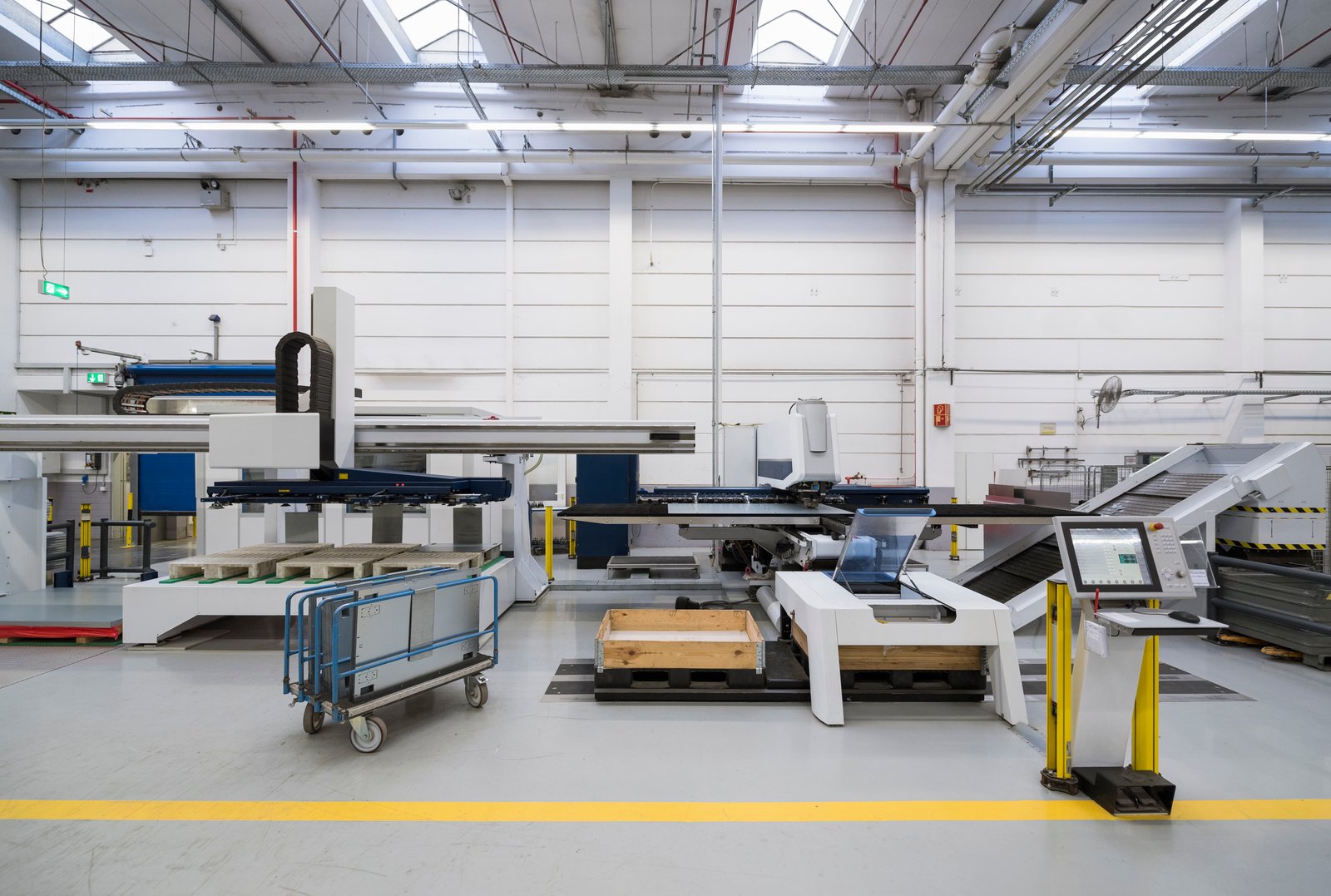
The trajectory of smart software in metal tube cutting points towards an increasingly autonomous, interconnected, and intelligent future. These impending technological advancements will further refine efficiency, minimize waste, and reshape the roles of human operators, making manufacturing processes even more adaptive and resilient.
Deeper Integration of AI and Machine Learning
The current applications of AI in smart software, such as basic nesting and path optimization, are just the beginning. The future will see a far deeper integration of AI and Machine Learning across the production lifecycle8. This will include self-learning algorithms that can adapt to new materials and complex geometries with minimal human input. For example, AI systems could learn from every cut, adjusting parameters automatically to achieve optimal speed and quality, even compensating for slight variations in material batches. This would move beyond pre-programmed settings to genuinely adaptive, real-time optimization, enhancing precision and reducing scrap rates even further.
Furthermore, AI will play a critical role in predictive failure and self-correction. Advanced machine learning models, analyzing vast streams of sensor data, will not only predict when a component might fail but also suggest or even initiate pre-emptive maintenance actions. This capability will drastically reduce unscheduled downtime, moving towards a truly autonomous production environment. Imagine a machine that identifies a worn-out part, orders a replacement, and schedules its own maintenance during a planned break, all initiated by an intelligent algorithm.
This deeper AI integration will also enable more personalized and customized solutions. As clients increasingly demand unique, low-volume productions, AI can quickly generate and optimize cutting plans for bespoke designs, dramatically reducing the lead time for custom orders. This adaptability will be a significant competitive advantage for fabricators catering to specialized markets, allowing for mass customization with the efficiency of mass production.
The Rise of Digital Twin and Metaverse Manufacturing
While current digital twin capabilities provide virtual replicas for monitoring and basic simulation, the future will see these digital twins become far more sophisticated and interactive, merging into the concept of metaverse manufacturing9. This isn't just about visualization; it’s about creating a fully immersive, collaborative virtual environment where engineering, production, and service teams can interact with virtual models of machines and entire factories in real-time, from anywhere in the world.
This advanced digital twin technology will allow for comprehensive virtual testing of new designs, cutting strategies, and even factory layouts without any physical prototyping. Engineers can simulate every possible scenario, identify potential issues, and optimize processes in a risk-free virtual space before committing to physical production. This will drastically reduce development cycles and material consumption associated with trial-and-error. For a global enterprise like MZBNL, with clients across continents, this means faster, more efficient collaboration on customized solutions.
Moreover, metaverse manufacturing will revolutionize training and remote support. Operators could train on virtual machines that behave identically to their physical counterparts, gaining proficiency in a safe and controlled environment. Remote technical support could transition to augmented reality (AR) or virtual reality (VR)10 overlays, where technicians guide on-site staff through complex repairs or calibrations in an immersive digital workspace. This level of virtual interaction will redefine after-sales service and training, offering unparalleled responsiveness and reducing the need for costly physical travel, addressing pain points like limited local service support.
Enhanced Interoperability and Cybersecurity
As smart factories become more interconnected, the importance of seamless interoperability and robust cybersecurity will become paramount. Future smart cutting software will prioritize open standards and universal communication protocols11, allowing different machines, software platforms, and even enterprise resource planning (ERP) systems from various vendors to communicate and exchange data effortlessly. This will break down existing data silos, providing a unified, real-time view of the entire production ecosystem.
Enhanced interoperability means that a cutting machine can seamlessly receive production schedules from an ERP system, provide real-time status updates to a factory management dashboard, and even communicate with upstream material handling robots or downstream bending machines. This creates a truly integrated workflow, optimizing material flow and overall production efficiency across the entire value chain. For businesses like Ahmed's, aiming for full automation, this seamless integration is key to unlocking maximum productivity and control.
Simultaneously, with increased connectivity comes an elevated risk of cyber threats. Future smart software will embed advanced cybersecurity measures directly into its architecture, not as an afterthought. This includes end-to-end data encryption, multi-factor authentication for machine access, intrusion detection systems, and secure over-the-air (OTA) updates to patch vulnerabilities proactively. Protecting proprietary designs, production data, and operational integrity from cyber-attacks will be a critical feature, ensuring the trustworthiness and reliability of smart manufacturing systems in an increasingly digitized world.
AI will enable mass customizationDoğru
Future AI systems will allow efficient production of customized designs with mass production efficiency, as mentioned in the AI integration section.
Digital twins replace physical testingYanlış
While digital twins will significantly reduce physical prototyping, the text states they'll be used for comprehensive virtual testing before physical production, not complete replacement.
Sonuç
The smart software behind modern metal tube cutting machines is revolutionizing the industry, addressing pain points like skilled labor shortages, material waste, and complex operations. Innovations like MZBNL's No-CAD system, zero-waste cutting, and front-feeding technology significantly enhance efficiency, ease of use, and cost-effectiveness, paving the way for a more automated, intelligent, and profitable future in metal fabrication.
-
Discover how smart software increases efficiency and reduces costs in the cutting process ↩
-
Learn how advanced systems enhance production through better design understanding and material flow ↩
-
Discover strategic solutions for overcoming common industry challenges in metal fabrication ↩
-
Review expert insights on the shortage of skilled labor in the manufacturing industry ↩
-
Discover how software solutions mitigate labor challenges in metal tube processing. ↩
-
Understand the impact of patented advancements on tube cutting processes. ↩
-
Learn how traditional systems manage material waste and their inefficiencies. ↩
-
Learn about AI's role in adapting to new materials and enhancing productivity ↩
-
Discover how interactive digital twins facilitate innovation in manufacturing processes ↩
-
Understand the impact of immersive technology on technical training and remote support ↩
-
Investigate how seamless communication protocols enhance production efficiency ↩
Sorularınız mı var veya daha fazla bilgiye mi ihtiyacınız var?
Kişiselleştirilmiş yardım ve uzman tavsiyesi için bizimle iletişime geçin.
